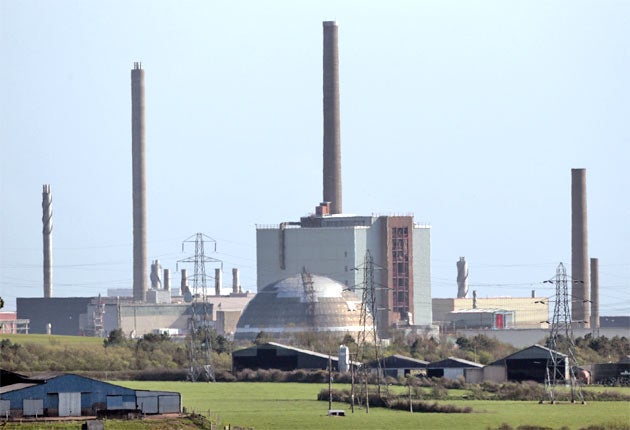Closure of Mox plant leaves nuclear waste headache for Cumbria

Your support helps us to tell the story
From reproductive rights to climate change to Big Tech, The Independent is on the ground when the story is developing. Whether it's investigating the financials of Elon Musk's pro-Trump PAC or producing our latest documentary, 'The A Word', which shines a light on the American women fighting for reproductive rights, we know how important it is to parse out the facts from the messaging.
At such a critical moment in US history, we need reporters on the ground. Your donation allows us to keep sending journalists to speak to both sides of the story.
The Independent is trusted by Americans across the entire political spectrum. And unlike many other quality news outlets, we choose not to lock Americans out of our reporting and analysis with paywalls. We believe quality journalism should be available to everyone, paid for by those who can afford it.
Your support makes all the difference.The Nuclear Decommissioning Authority (NDA) said potential delays in Japanese orders for Mox fuel following the earthquake and tsunami on 11 March, which caused a major crisis at the Fukushima nuclear plant, meant that the Sellafield Mox Plant must now close with the loss of about 800 jobs.
Experts have told The Independent the option of returning highly dangerous plutonium dioxide to Japan by sea will be frowned upon by many countries, especially the United States which fears possible terrorist attacks and nuclear proliferation. Plutonium is a key ingredient of nuclear weapons.
Another option would be to convert Japanese plutonium into Mox fuel by building a second Mox plant at Sellafield at an estimated cost of up to £6bn.
A second Mox plant is now under consideration by the Government and a decision is expected before the end of the year as a way of dealing with Britain's civil plutonium stockpile, the biggest in the world.
If a second Mox plant goes ahead, it is possible the Japanese plutonium could be converted into nuclear fuel and burned in new British reactors designed to take this type of fuel.
But this would be controversial as it would almost certainly be far more expensive to burn Mox fuel than the much cheaper uranium fuel now used.
The NDA said: "[We] will continue to store Japanese plutonium safely and securely and further develop discussions with the Japanese customers on a responsible approach."
The troubled Sellafield Mox Plant was built in the 1990s and designed to handle foreign, mainly Japanese, plutonium dioxide that had been recycled from spent fuel by the Thorp plant at Sellafield. It was awarded an operating licence in 2001 after receiving what was supposed to be firm commitments from Japanese power companies.
Only one Japanese power company, Chubu Electric, signed a firm contract but it soon emerged there were serious technical problems in the Sellafield Mox Plant's production line. Instead of producing up to 120 tonnes of Mox fuel a year, the plant was only managing a tiny fraction of that target.
An investigation by outside consultants in 2006 found the plant was dogged by about 6,000 minor equipment failures over two months, equal to 37,000 failures a year. During a minor failure the entire production line would be halted for 15 minutes to an hour, while in a major failure the line would stand idle for several days.
A deal last year with Chubu meant the Japanese would pay for a huge upgrade of the entire plant, which would now be unable to fulfill its first Japanese order until the end of the decade. But the Fukushima nuclear disaster threw the market for Mox fuel in turmoil, leading to the closure of the Mox plant at Sellafield and posing a big question over what to do with a growing plutonium waste mountain.
Join our commenting forum
Join thought-provoking conversations, follow other Independent readers and see their replies
Comments